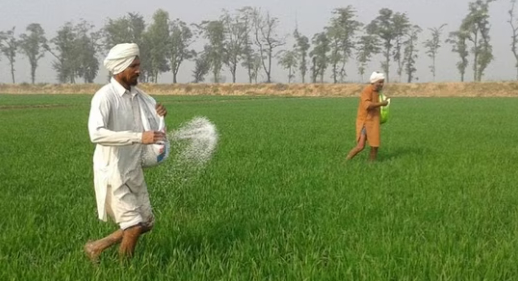June 15, 2025 | 19:22 GMT +7
June 15, 2025 | 19:22 GMT +7
Hotline: 0913.378.918
June 15, 2025 | 19:22 GMT +7
Hotline: 0913.378.918

The consumption of conventional urea has gone down in 344 districts of the country, official data show, which has helped paring costly imports.
India’s import and consumption of urea, a key crop nutrient, has declined for the first time in decades on the back of higher domestic production of nano urea, a liquid form of the chemical, as well as a move towards eco-friendly alternatives by farmers, official data show.
Total imports of urea, which are regulated by the government, stood at 6.4 million tonne in the first 10 months of the ongoing fiscal year, compared to 7.3 million tonne in the corresponding period a year ago, a fall of 12%. Imports had peaked to 9.8 million tonne during 2020-21.
Domestic consumption of urea until January 31 of the year to March also dropped 0.3% to 3.17 million tonnes from 3.18 million tonne a year ago. However, the sale of all fertilizers put together has inched up by 2.9% to 53.9 million from 52.4 million tonne, mainly sales of complex and di-ammonium phosphate (DAP) group of fertilizers rose.
The government has set 2025-26 as the deadline by which it hopes to achieve self-sufficiency in urea by ramping up local output of nano urea. The liquid form is said to be more efficient than conventional urea. Crop nutrients are sold by manufacturers at a discount to millions of farmers, who are then reimbursed by the Centre.
As part of a broader policy push to limit fertilizer subsidies and promote natural and organic farming, the government has been running PM-Pranam, a scheme announced by finance minister Nirmala Sitharaman in her 2023-24 budget speech.
Food and fertiliser subsidies accounted for about one-eighth of India’s total budget worth nearly ₹39 lakh crore in 2022-23. India, the world’s third-largest fertilizer buyer, relies on imports to meet domestic demand.
Under PM-Pranam, 50% of fertilizer subsidies saved by a state is given back to it as a grant, which states can put to any use, such as building infrastructure, an official said. “In other words, if a state saves ₹3,000 crore, then it will get back ₹1,500 crore,” he said, declining to be named.
The consumption of conventional urea has gone down in 344 districts of the country, official data show, which has helped paring costly imports. Sales of locally produced nano urea have increased in 74 districts.
India’s consumption of conventional urea is estimated to decline by 2.5 million tonne in 2023-24 due to an increase in the demand of nano urea and the government’s efforts to curb use of agricultural chemicals through natural farming, fertilizer minister Mansukh Mandaviya said last week. Total urea consumption during 2022-23 year was nearly 35.7 million tonne.
The country’s food security is closely linked to availability of fertilizers, whose prices hit a multi-year peak in 2022 due to the Ukraine conflict and knock-on effects of the pandemic on supply chains.
The government’s spending on crop nutrient subsidies for 2022-23 leapt to a record ₹2.25 lakh crore. For the current fiscal year, the budgeted fertilizer subsidy is ₹1.75 lakh crore, which has been increased to ₹1.89 lakh crore in revised estimates of 2023-24.
(Hindustantimes)

(VAN) Extensive licensing requirements raise concerns about intellectual property theft.

(VAN) As of Friday, a salmonella outbreak linked to a California egg producer had sickened at least 79 people. Of the infected people, 21 hospitalizations were reported, U.S. health officials said.

(VAN) With the war ongoing, many Ukrainian farmers and rural farming families face limited access to their land due to mines and lack the financial resources to purchase needed agricultural inputs.

(VAN) Vikas Rambal has quietly built a $5 billion business empire in manufacturing, property and solar, and catapulted onto the Rich List.

(VAN) Available cropland now at less than five percent, according to latest geospatial assessment from FAO and UNOSAT.

(VAN) Alt Carbon has raised $12 million in a seed round as it plans to scale its carbon dioxide removal work in the South Asian nation.

(VAN) Attempts to bring down the price of the Japanese staple have had little effect amid a cost-of-living crisis.